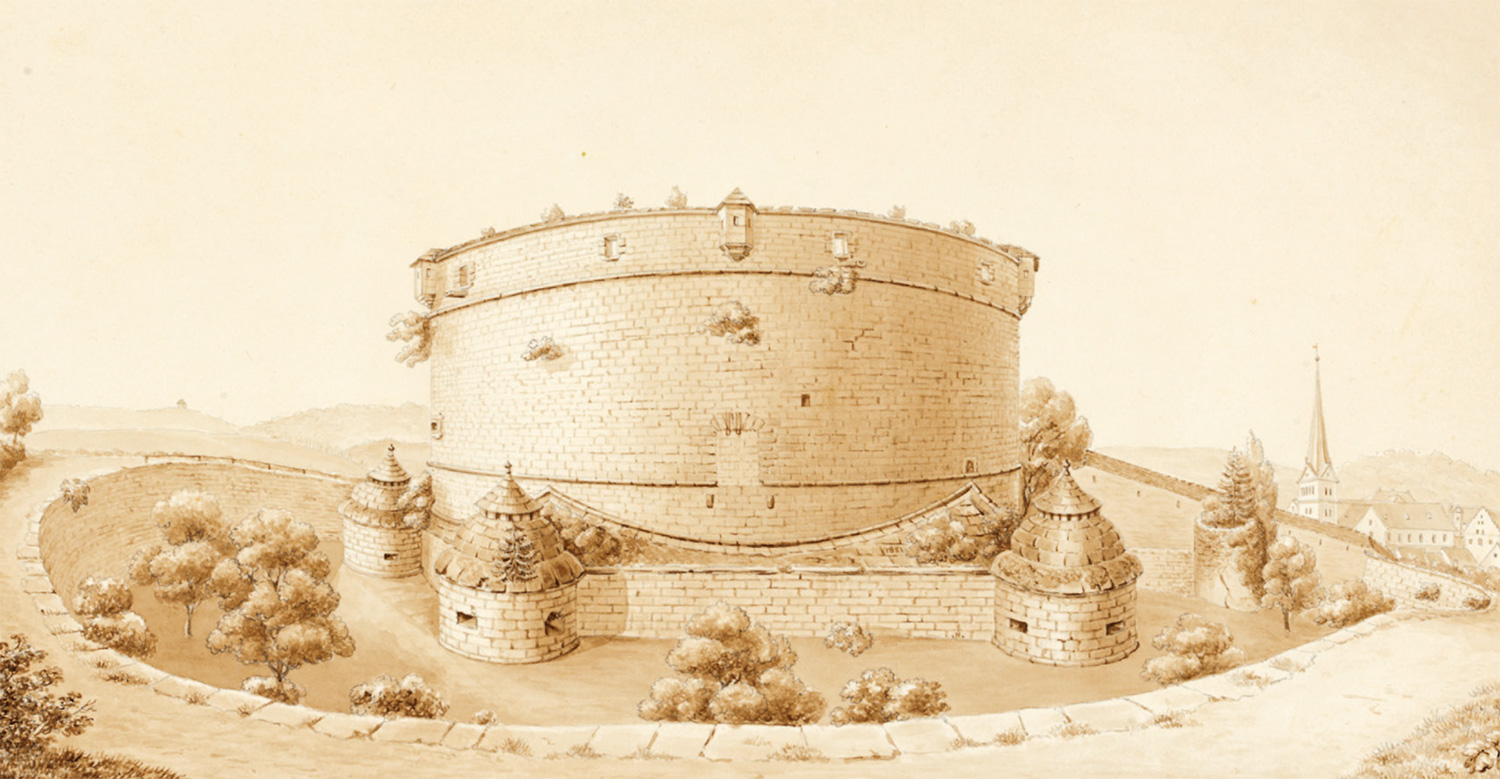A Blind Colossus
To protect the city of Schaffhausen
The monumental impression of the Munot should not overshadow the weaknesses of the fortification. It would have been difficult to defend against an attack and would not have offered much protection to the city of Schaffhausen.
Not long after construction of the fortress had been completed, the first misgivings were voiced about its battle readiness. Plans to rectify the situation were devised on several occasions, but hardly ever realised due to the prohibitive costs. The greatest deficiency from a strategic point of view was the flat and unfortified foreland.
During the construction, the northern access route in front of you was used for deliveries of construction materials; later, it served as a city gate. From a defensive perspective, however, it made no sense for the city gate to face the enemy, and over the course of the 17th century, the gate was walled up. It was not until the 19th century restoration that it was reopened.
Ground-plan of the Munot casemate with gun-loops and angles. Remarkably, the side facing the enemy (north) only contains a small number of gun-loops, which would have been rather ineffective against advancing enemy forces.

Bild: Museum zu Allerheiligen Schaffhausen, Inv. B5117
The dilapidated Munot with its walled up northern entrance. Hans Wilhelm Harder, 1851.